|
For those of you who have been following along, this is part of my "Dinner and a Movie: White Christmas" series! A "malted" makes an appearance in my favorite club car scene as Bob, Phil, Betty, and Judy make their way from Florida to Vermont. As they order some late-night snacks, Judy orders a "malted" from the bartender (who, coincidentally, I believe is the only Black person in the entire movie). What she means of course, is a malted milkshake - vanilla, not chocolate. And while I love malted everything, from chocolate-covered malted milk balls to malted milkshakes, this special ingredient has its roots in the brewing industry. Malt is made from barley and was originally a primary ingredient in beer (malt-based beers are some of the only ones I'll drink - I prefer them to hops-fermented ones), and later whiskey. Barley is partially sprouted and then dried and ground to create malt. In the 19th century it also became an industrial baking product, helping to give sweetness and a nice crust to breads. But in the 1870s, British pharmacist James Horlicks was trying to come up with an alternative food to raw milk for infants and a nutritional supplement for invalids. Milk at the time was rarely pasteurized and could often infect children with diseases. Lacking funds, he emigrated to Racine, Wisconsin, where his younger brother already lived. By the 1880s the brothers had patented a fortified gruel that they dried and ground, containing malted barley, ground grains, and dried milk. Developed as a water-soluble food for infants, it was quickly adopted in both tropical climates and polar expeditions for its shelf stability, palatability, and nutritional content. Horlick's brand malted milk became the industry standard and was adopted by the Temperance movement as well, showing up in soda fountains and in ice creams. In 1927, Carnation launched its own brand of malted milk and soon chocolate options were available on the market as well. Ovaltine, a malted milk powder that originally also contained eggs, was developed in Switzerland in the 1900s (originally with the name "Ovomaltine"). By the time we get to White Christmas in 1954, malted milkshakes, including chocolate malts, were a fixture of diners and soda fountains (and, apparently, trains) everywhere. Today, Carnation is one of the few malted milk powders widely available, and that's what I used. They also had a recipe for malted milkshakes right on the back of the container. Vanilla Malted MilkshakesThis recipe is per serving. 2 scoops vanilla ice cream 3/4 cup whole milk teaspoon vanilla extract 3 tablespoons malted milk powder Place all ingredients in a blender and blend until smooth. This did make a very good milkshake - the ratio of ice cream to milk was just about perfect. Although it was maybe a little more liquidy than I like, it didn't get ice crystals, as you sometimes do with homemade milkshakes. That being said, three tablespoons of malted milk powder is a LOT, and resulted in a very strong malted milk flavor. If you're unsure of how fond you are of malted milk, I would cut it down to two tablespoons. This makes about 12-16 ounces, so make sure to pour it into a tall glass and top it with whipped cream. Be sure to follow the White Christmas tag or visit the original menu post for the rest of the White Christmas Dinner and a Movie menu. Are you going to make this, or another beverage from the list? Want to see more Dinner and a Movie posts? Make a request or drop your suggestions in the comments! The Food Historian blog is supported by patrons on Patreon! Join us for awesome members-only content like free digitized cookbooks from my personal collection, e-newsletter, and even snail mail from time to time!
1 Comment

An untitled woodcut, bold in design, apparently created for use on broadsides or banners during the Whigs' "log cabin" campaign of 1840. In front of a log cabin, a shirtsleeved William Henry Harrison welcomes a soldier, inviting him to rest and partake of a barrel of "Hard Cider." Nearby another soldier, already seated, drinks a glass of cider. On a staff at right is an American flag emblazoned with "Harrison & Tyler." Library of Congress.
Thanks to everyone who participated in this week's Food History Happy Hour! In this episode we made the Jersey Cooler from the Roving Bartenter (1946), but the cocktail itself appears to have been invented by the famous Jerry Thomas as it appears in his 1862 How to Mix Drinks.
With the primary ingredient hard cider, I thought it a particularly apt cocktail for our discussion of apples in America! I chose apples as the topic for tonight's Food History Happy Hour because mid-September is when apple harvest in the Northeast usually really starts to get underway. Coincidentally (on my part, anyway), tonight is also the start Rosh Hashanah, or the Jewish New Year, which runs until Sunday. One of the components of Rosh Hashanah is the use of apples and honey, particularly in Ashkenazi Jewish households, who originate in Eastern Europe. Apples and honey are eaten to symbolize sweetness and prosperity for the coming year. On a more somber note, I learned that Supreme Court Justice Ruth Bader Ginsburg passed away just minutes before the start of the show. In fact, I almost didn't do tonight's episode because I was so upset. But I figured that the notorious RBG would power through if it was her, and it was fitting to be talking about apples and hoping for peace and prosperity in the coming New Year. So we poured one out for Ruth and gave her a toast. We talked about the origins of hard cider, with an aside about the 1840 presidential campaign of William Henry Harrison, why hard cider fell out of favor, the origins of apples in the mountains of Kazakhstan, Johnny Appleseed, the story of Red Delicious, heirloom apple varieties, and the not-so-American origins of apple pie. Jersey Cooler (1946)
From the 1946 Roving Bartender by Bill Kelly:
You can see other, slightly more complicated versions below: Jersey Cocktail (1862)
As far as I can tell, this is the oldest version of the Jersey Cooler (called cocktail here), invented by the famous Jerry Thomas from his How to Mix Drinks from 1862. Because the earliest reference is from Mr. Thomas, who was a born and raised New Yorker, I think that the "Jersey" in this instance refers to New Jersey, not Jersey, England.
Here's his recipe: (Use small bar glass.) 1 teaspoonful of sugar. 2 dashes of bitters. Fill tumbler with cider, and mix well, with lemon peel on top. Episode Links
Our next episode will be on Friday, October 2, 2020 and since it will officially be October, we'll be talking about pumpkins and the origins of the much-maligned pumpkin spice!
If you enjoyed this episode of Food History Happy Hour and would like to support more livestreams, please consider joining us on Patreon. Patrons get special perks like access to members-only content.
Thanks to everyone who joined me on Friday for Food History Happy Hour live on Facebook. This week we discussed the role of riots and boycotts in history and food history, touching primarily on the food boycotts and riots and high cost of living protests of 1916/1917 which occurred around the globe. We also talked about women's suffrage and farmerettes, midnight suppers, Frank Meier, inventor of the bees' knees cocktail and his role in WWII, poison candy and the Pure Food and Drug Act of 1906, food and riots or protests, including the role of food and cooking in the Civil Rights movement, Laura Ingalls Wilder and the Little House Cookbook, L. M. Montgomery, requests for next week, and a brief introduction to the history of gelatin, beaten biscuits, and other formerly upper-crust foods which became inexpensive convenience foods. If you want to watch back episodes you can check them out on right here on the blog or I am hoping to upload full episodes to YouTube now that my channel is officially verified! Bees' Knees Cocktail (1936)In 1936 Frank Meier published "The Artistry of Mixing Drinks," a beautifully designed little bartender's guide based on his time as the head bartender at the Hotel Ritz Carlton's Cafe Parisian, which opened in 1921. Frank had purportedly trained at the Hoffman House in New York City before taking on his new role at the Ritz. He served as head bartender and host for over twenty years and even played a role in the French Resistance during WWII, when the Ritz became German headquarters. Meier was a well-known originator of cocktails, including the famous "Bees' Knees," which he invented sometime in the 1920s. It became popular in the United States during Prohibition, likely because the honey and lemon masked the taste of bathtub gin. Frank's original recipe reads: "In shaker: the juice of one-quarter Lemon, a teaspoon of Honey, one-half glass of Gin, shake well and serve." A more modern recipe might be: Juice of 1/4 lemon (or half a tablespoon) 1 or 2 teaspoons of honey 1 or 1 1/2 ounce gin Shake over ice and serve in a cocktail glass. One teaspoon of honey definitely wasn't enough for me - I couldn't taste the honey at all! Perhaps "a dollop" might be a better descriptor. Here are some resources on some of the topics we discussed tonight:
Next week we'll be discussing Easy Bake Ovens, Jello and aspic, foods of the 1950s and '60s, and all sorts of other fun stuff. See you then! If you liked this post and would like to support more Food History Happy Hour livestreams, please consider becoming a member or joining us on Patreon. Members and patrons get special perks like access to members-only content.
In an effort to cope with COVID-19 and all the shelter in place orders out there across America, I decided to host a Food History Happy Hour, live on Facebook! I'll be hosting these each Friday evening at 8 PM eastern standard time for anyone who wants to join.
I'll make a historic cocktail - alcoholic or non-alcoholic - live on the air, and then take questions related to food history! I can't always promise I'll know the answer every time, but that's what my trusty phone is for - googling.
This week I made a Hoffman House Fizz, from the Hoffman House Bartender's Guide, published in 1912.
Hoffman House Fizz Recipe Juice of half a lemon 1/2 teaspoonful powdered sugar 1 jigger Plymouth gin 1 teaspoonful cream Shake well. Pour into glass simultaneously with seltzer (I used lemon-lime) and drink while effervescent. This was a surprisingly refreshing beverage. Please note that Plymouth gin is sweeter and mellower than the typical London Dry Gin. I used American gin, Bluecoat brand, which is similarly sweeter and mellower. I did feel it needed a bit more cream to temper the acidity of the lemon juice - I would add a tablespoon or more next time. A smidge more sugar (a full teaspoon) would probably also temper the lemon juice a bit. In all, I would probably drink this again. Thanks again to everyone who joined for the livestream and I hope to see more of you next week, when I'll be doing a historic beverage based on cranberry juice and we'll talk about cranberry scandals! See you then!
If you liked this post and would like to support more Food History Happy Hour livestreams, please consider becoming a member or joining us on Patreon. Members and patrons get special perks like access to members-only content.
Well, dear readers, it seems as though we are in the '20s again, and since "Dry January" seems to be a growing trend, I thought I would look at some historic alternatives to alcohol for those who don't imbibe or those who are taking a break. Prohibition, the 18th Amendment to the Constitution banning importation, production, sale, and consumption of alcohol in the United States, officially took effect across the country in January, 1920. It was a long, long road to the Constitutional amendment. Begun in the late 18th century, the Temperance movement was a response to the increasing consumption of distilled liquor by the general populace. Rum, distilled by slaves from molasses produced by brutal Caribbean sugar plantations, was flooding the market at the end of the 18th century. Cider, ale, and small beer were common daily beverages. John Adams was known to enjoy hard cider with breakfast. George Washington adored Maderia. All the founding fathers drank at levels that seem excessive by today's standards. And the Whisky Rebellion was just the beginning of American distilling. Alcohol was a way to preserve and consume calories (whether from apples or grain) and was known to be safer for drinking than most water. But it had unsavory unintended consequences. For Temperance advocates, alcohol enhanced all of humanity's sins: drunkenness begat violence, both domestic and public, and wasted hard-earned wages while children starved. In February, 1751, the famed British satirical artist William Hogarth published a pair of etchings in reaction to the Gin Craze. They were meant to be viewed side-by-side, with "Beer Street" at the left and "Gin Lane" at the right. The etchings were accompanied by the following poem: Gin, cursed Fiend, with Fury fraught, Makes human Race a Prey. It enters by a deadly Draught And steals our Life away. Virtue and Truth, driv'n to Despair Its Rage compells to fly, But cherishes with hellish Care Theft, Murder, Perjury. Damned Cup! that on the Vitals preys That liquid Fire contains, Which Madness to the heart conveys, And rolls it thro' the Veins. The pair of images was meant to illustrate the evils of gin consumption in London. In the above image, emaciated drunks line the streets. A drunken woman lets her baby fall to its death. A person has hung themselves in a dilapidated building and other dwellings are falling down. The distillery, pawn shop, and coffin maker are all doing very well and EVERYONE is drinking gin. Meanwhile, on Beer Street, healthily rotund, industrious people are resting from their day's work to have a beer. The pawn broker's building is a dilapidated ruin, the dwellings in good shape as construction begins on another, and everyone is well-dressed and otherwise in good spirits. This images was accompanied by the following poem: Beer, happy Produce of our Isle Can sinewy Strength impart, And wearied with Fatigue and Toil Can cheer each manly Heart. Labour and Art upheld by Thee Successfully advance, We quaff Thy balmy Juice with Glee And Water leave to France. Genius of Health, thy grateful Taste Rivals the Cup of Jove, And warms each English generous Breast With Liberty and Love! If we were to compare 18th century Britain to America, we might replace gin with rum (with its problematic connections to slavery), and beer with hard cider, the drink of choice for thousands of colonists and later American citizens. William Henry Harrison won the 1840 presidential election by running as the "log cabin and cider" candidate - meaning a Western pioneer, the better to appeal to rural voters against the much-maligned Martin Van Buren, of upstate New York, who lost his reelection campaign. But while whiskey, rum, and "fortified" wines like Madeira and port remained popular beverages throughout the 18th and 19th century, alcohol consumption remained as a problem for women and children. Although many Temperance advocates initially just targeted distilled spirits, soon beer and wine and indeed, any alcohol at all, was decried as the root of many evils. Many abolitionists were also Temperance advocates. Lyman Beecher, father to cookbook author Catherine Beecher and her more famous author sister, Harriet Beecher Stowe, was an early Temperance advocate. Connected to a religious revival in America as part of the Second Great Awakening, Temperance gained traction in communities throughout the United States. The above image is a 19th century analog to the Hogarth images. At left, a healthy-looking family kneels before a man who is perhaps a minister. The angel of Temperance with her anti-alcohol pledge floats down on a cloud, with cupids and a cornucopia of prosperity. In the background, a new and prosperous looking church At the right, a drunkard, bottle in hand, sprawls on the floor. His overworked wife and starving children huddle in the background, with the little girl praying to the glorious angel. Sad looking shacks appear behind them, with a mob of people in the street. After the Civil War, the fight for Temperance continued. Throughout the 19th century, towns, counties, and even states held referendums on whether or not to go "dry." Some advocates installed drinking fountains in public squares in cities around the country. The Women's Christian Temperance Union, one of the strongest proponents of Temperance, formed in 1874. In 1900, Carrie Nation took to violence, chopping up saloons with a hatchet, to try to suppress alcoholism. In 1913, the federal income tax was instated. For the first time, the federal government had a form of tax income that did NOT come directly from the sale of alcohol, which had previously been the main source of tax income. During WWI, the Temperance movement and the Prohibitionists used the threat of wartime and even the need to conserve grain as a reason to instate Prohibition. Here, the threat of alcoholism and "hardened liver" is compared to the deaths caused by the common house fly. At the bottom, the flyer calls for a Constitutional Amendment. Published in 1917, this flyer was created at the outbreak of World War I. Although the United States was not at war when the above image was published in Puck, it nevertheless made a case to reinstate the Army canteen, where beer and soft drinks were sold. Congress had apparently disbanded them by grace of the Women's Christian Temperance Movement - illustrated here by a hysterical older woman in blue and accompanied by an elderly minister and, in the rear, a "timid legislator." The comparison is made between an Army-sponsored canteen and a public "dive," where soldiers drink to wrack and ruin and can consort with the prostitute implied by her red dress and shoes in the lower right hand corner. This illustrates that some people still fought to keep beer and hard cider as a part of daily life, even as public opinion against distilled spirits waxed to a frenzy. Thirty-six states did, indeed, ratify the 18th Amendment on January 16, 1919. It read, "After one year from the ratification of this article the manufacture, sale, or transportation of intoxicating liquors within, the importation thereof into, or the exportation thereof from the United States and all territory subject to the jurisdiction thereof for beverage purposes is hereby prohibited." Prohibition, as it came to be known, went into effect on January 16, 1920. Prohibition came to represent government overreach into peoples' daily lives and the criminalization of alcohol allowed organized crime to flourish in the 1920s, despite the best efforts of police. Gangsters like the infamous Al Capone, wielding machine guns they learned to use in the First World War, made fortunes off of illegal distilleries, speakeasies, and other criminal enterprises, all while dodging federal taxes. Well, at least until the Feds catch up with you, right Al? The wealthy could afford to keep consuming booze (often from the wine cellars amassed on their private estates) as police and prosecutors largely looked the other way. The poor and middle class risked their lives on bathtub gin, wood alcohol, and methylated spirits (also known as denatured alcohol) which caused blindness or even death. The illegality meant that alcohol production was unregulated and therefore dangerous to human health. Prohibition was ultimately a failure. The stock market crash of 1929 and subsequent Great Depression left many people in severe economic (and mental) distress. It was repealed on December 5, 1933, with the ratification of the 21st Amendment, which specifically repealed the 18th. For many, the return of the ability to self-medicate with alcohol helped temper the despair of the Depression, although it likely ruined as many lives as it helped. But while romanticized notions of the "Roaring Twenties" continue today, we can learn from the problems that Temperance sought to solve. Absenteeism and incarceration both declined during Prohibition. Alcohol consumption overall did decline in the 20th century, thanks in large part to the Temperance movement. Today, more and more people are reassessing their relationship with alcohol. In 2006, food writer John Ore coined the term "Drynuary" to describe what he and his wife considered to be a post-holiday alcohol detox. "Drynuary" or "Dry January" has been embraced by an increasing number of people and while the peer pressure to consume alcohol in social settings still exists, it is becoming more acceptable to abstain in public. Are we on the brink of a new Temperance movement? Probably not, but interesting to see the historical parallels. As we are in full swing of "Dry January," and as more people are embracing temperance, we can look to the past for interesting non-alcoholic beverages to tempt our palates. The nice thing about having an extensive library is that it is easy to do research when I want to - I just head upstairs to my little office and library, tucked up under the eaves of our little house. I pulled a couple of 1920s cookbooks that revealed some fascinating recipes. Coffee and tea were the most common alcohol replacers in polite society, but a number of fruit-based beverages and punches were also popular. Of course, most of them are very heavy on the sugar. The rise of soda fountains in the 1900s was in part a direct response to Temperance - it was a wholesome place for young people, women, and families to meet and socialize. It also meant that many Americans were replacing the vice of alcohol with what we know today to be the vice of sugar. Good Housekeeping Book of Menus, Recipes, and Household Discoveries (1922)The first book I perused was not this one, but I thought I would start here because it is the oldest of the 1920s cookbooks I looked at and its recipes were among the most interesting. Good Housekeeping's Book of Menus, Recipes, and Household Discoveries was published in 1922. Don't these sound delightful? "Apple Tree Dulcet" in particular is a brilliant name, although it's much more of a dessert than a beverage. "Gingerade," made with fresh or "green" ginger root also sounds delightful, if spicy. Grapefruit PunchOf these I think the Grapefruit Punch sounded the most delicious. I love both grapefruit and maraschino cherries, but have never had them together. I often drink half grapefruit juice, half ginger ale as a bitter-sweet winter tonic. 2 cupfuls water 3/4 cupful sugar 1 cupful grapefruit juice 1/2 cupful grapefruit pulp juice of 1 lemon 1/4 cupful maraschino cherries mineral water Combine the water and sugar, boil one minute, and let cool. Meanwhile, extract the grapefruit juice and to this add the grapefruit pulp and the lemon-juice. Allow to chill thoroughly and then add the maraschino cherries cut in halves. Dilute with mineral ice-water and serve very cold. Westminster Church (Utica, NY) Cook Book (1924)I love collecting community cookbooks - the earlier the better. This particularly nice one from Utica, NY (which is also where I found it), has just one page of beverages. Published in 1924, it includes a homemade version of what was likely a soda fountain drink: Strawberry Flip. Note that it calls for only one TABLESPOON of vanilla ice cream. Per serving, of course. The one that seems the most interesting to me is the first Fruit Punch, by Bessie C.B. Capron. Fruit Punch1 cup sugar 1 cup very strong tea (black) 2/3 cup orange juice 1/3 cup lemon juice 1 pint ginger ale 1 pint appolinaris This makes enough for 10 glasses. Okay, this probably needs a little translation for most people. To make the tea very strong, steep 2-3 bags in one cup of boiling water. The orange and lemon juice should be fresh-squeezed. And the ginger ale is probably better if you can find something a little stronger than your garden variety - a craft ginger ale would do nicely. And appolinaris? That's a German type of sparkling mineral water. Known as the "Queen of Table Waters," Appolinaris was a brand name mineral water discovered in the 1850s that is still around today. Although these days it's owned by Coca-Cola. This recipe is actually somewhat similar to 18th century punches that called for sugar, citrus juices, black tea, and sparkling water, albeit with the addition of strong spirits like rum and brandy (see: Fish House Punch). Standard Cookbook - For All Occasions (1925)Marion Lockhart's Standard Cookbook is a teensy tiny little hard cover (hence the fingers to hold it open). Published in 1925, it has a wide variety of punches, which is lovely. I do love malted milk, but I'm wary of raw eggs, so the "Egg Malted Milk" is not one I would probably attempt. However, the "Currant and Raspberry Punch" sounds divine. Currant and Raspberry PunchTake 1/2 glass (about 3-4 ounces) currant jelly and dissolve in 1 cup boiling water. To this add 1 cup raspberry sirup and 1 pint fresh water. Pour over ice in punch-bowl, then add 1 quart charged (sparkling) water. This makes about 2 quarts and seems like the perfect pink party punch to serve for Valentine's Day or a girly party. Despite the syrup and jelly, it also probably isn't too sweet, as you're cutting about 1 pint of sweet stuff with 1 pint of water and a quart of sparkling water. New Delineator Recipes (1929)And last but not least! The New Delineator Recipes. Published in 1929, this one comes with a few quite lovely photos. "Reception Chocolate" looks delicious and would be perfect for a winter hygge party. "Veranda Punch" listed here is very similar to the "Fruit Punch" listed above. Of all of these recipes, "Grape High Ball" sounds the most interesting, in part because it uses Niagara grapes. If you live in the Northeast, you can still find both Concord and Niagara grapes at some U-Pick orchards. If you've never had Niagara grapes, I recommend trying them if you see them. A dusky golden color, neither they nor the classic deep purple Concords are much like today's table grapes. Niagara grapes are very soft, with slippery-sweet insides and seeds. But they have a lovely flavor - almost perfumed, and would make a sophisticated beverage. Niagara Grape High BallFor sake of ease, I am combining the two recipe instructions. Wash grapes and boil [until] skin, pulp, and seeds separate. Press through a jelly bag and to every pint of juice add one-half cup of sugar. Boil for twenty minutes and chill. In glasses half-filled with shaved ice, add equal parts syrup and charged (sparkling) water. Lemon is an attractive addition. Well, that's all for now folks. Are any of you attempting a Dry January? If so, what do you normally drink for festive occasions? Share in the comments!
And, as always, if you enjoyed this (long!) post, please consider becoming a member of The Food Historian! You can join online here, or you can join us on Patreon. Members get access to members-only sections of this website, special updates, plus discounts on future events and classes. And you'll help support free content like this for everyone. Join today! |
AuthorSarah Wassberg Johnson has an MA in Public History from the University at Albany and studies early 20th century food history. Archives
July 2024
Categories
All
|
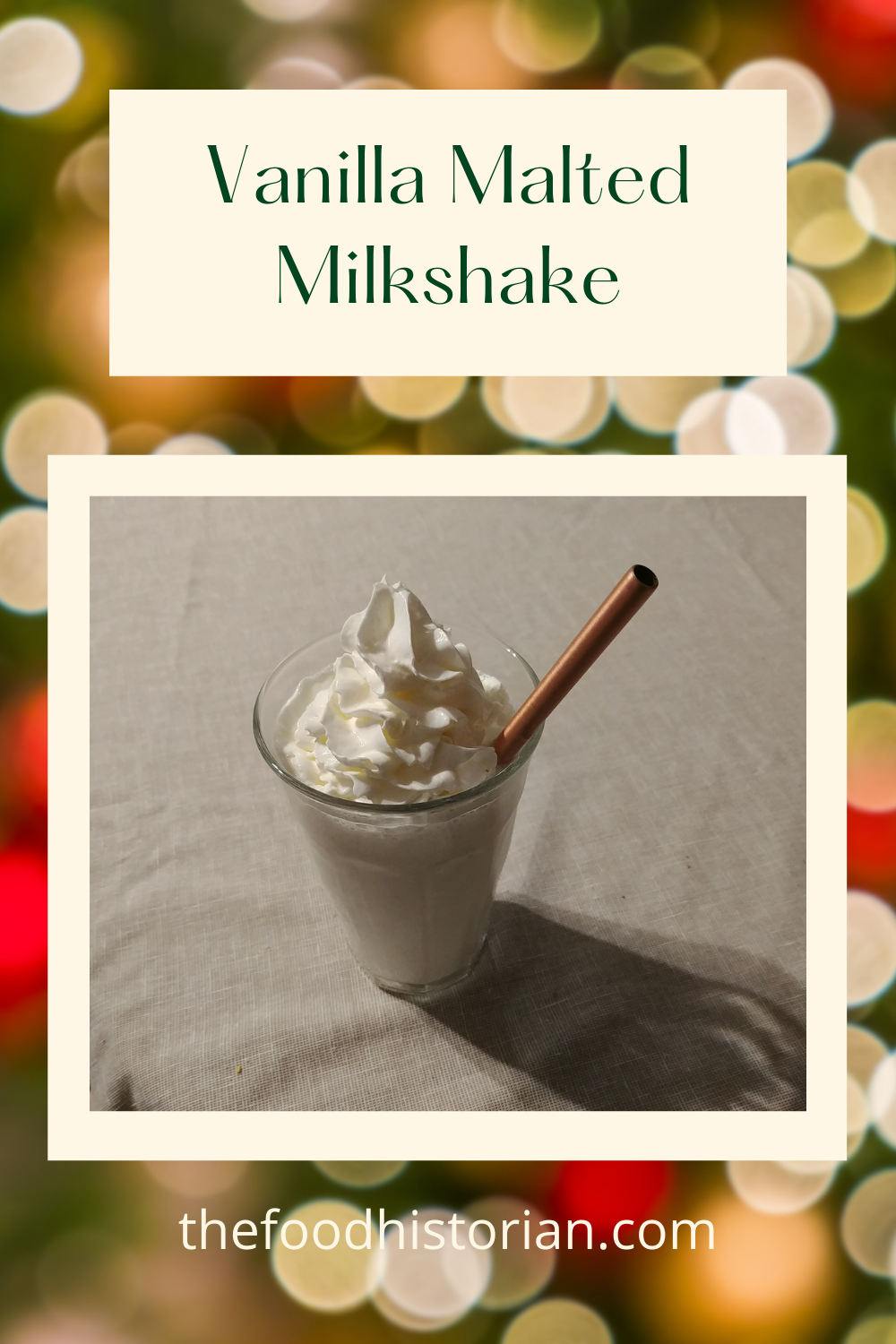

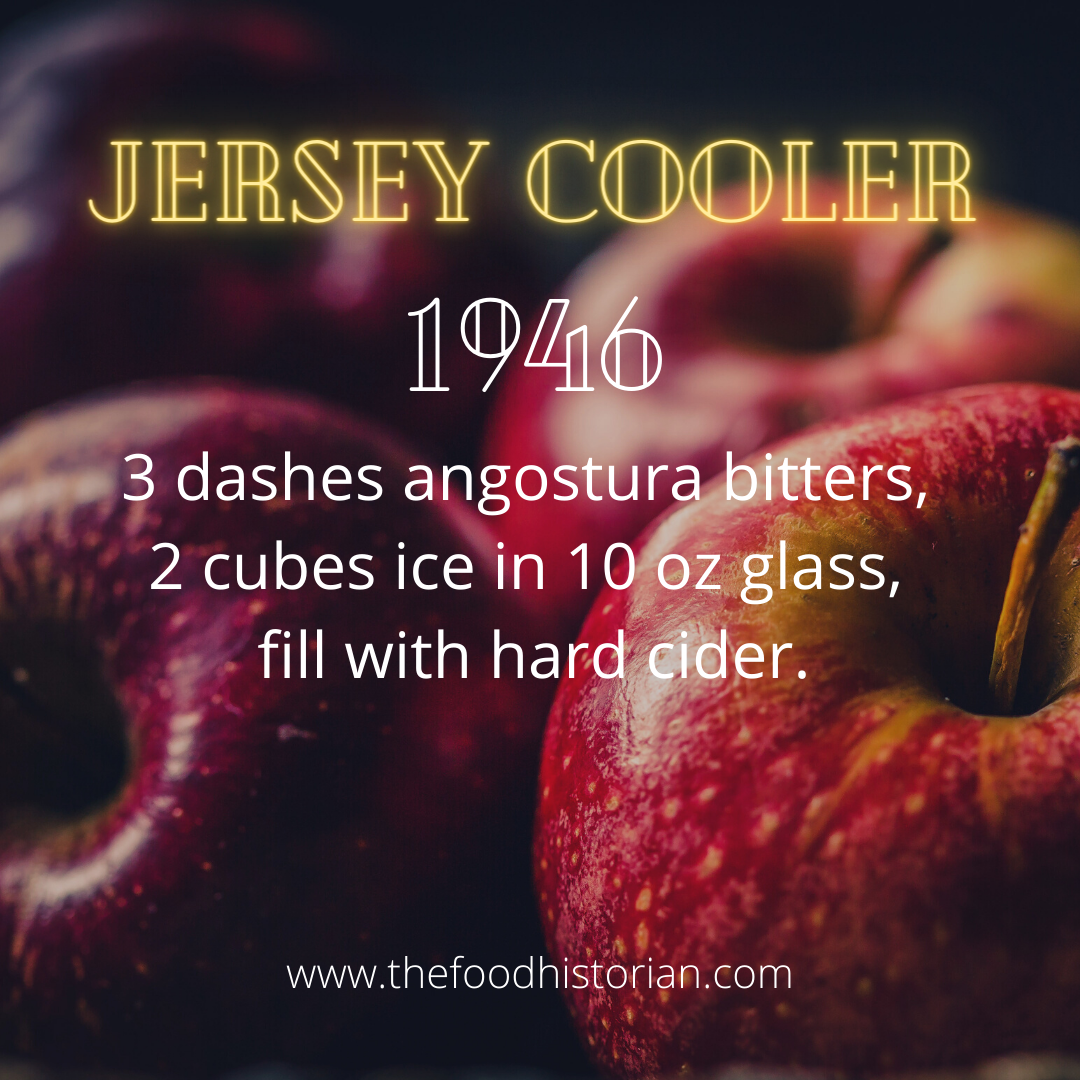
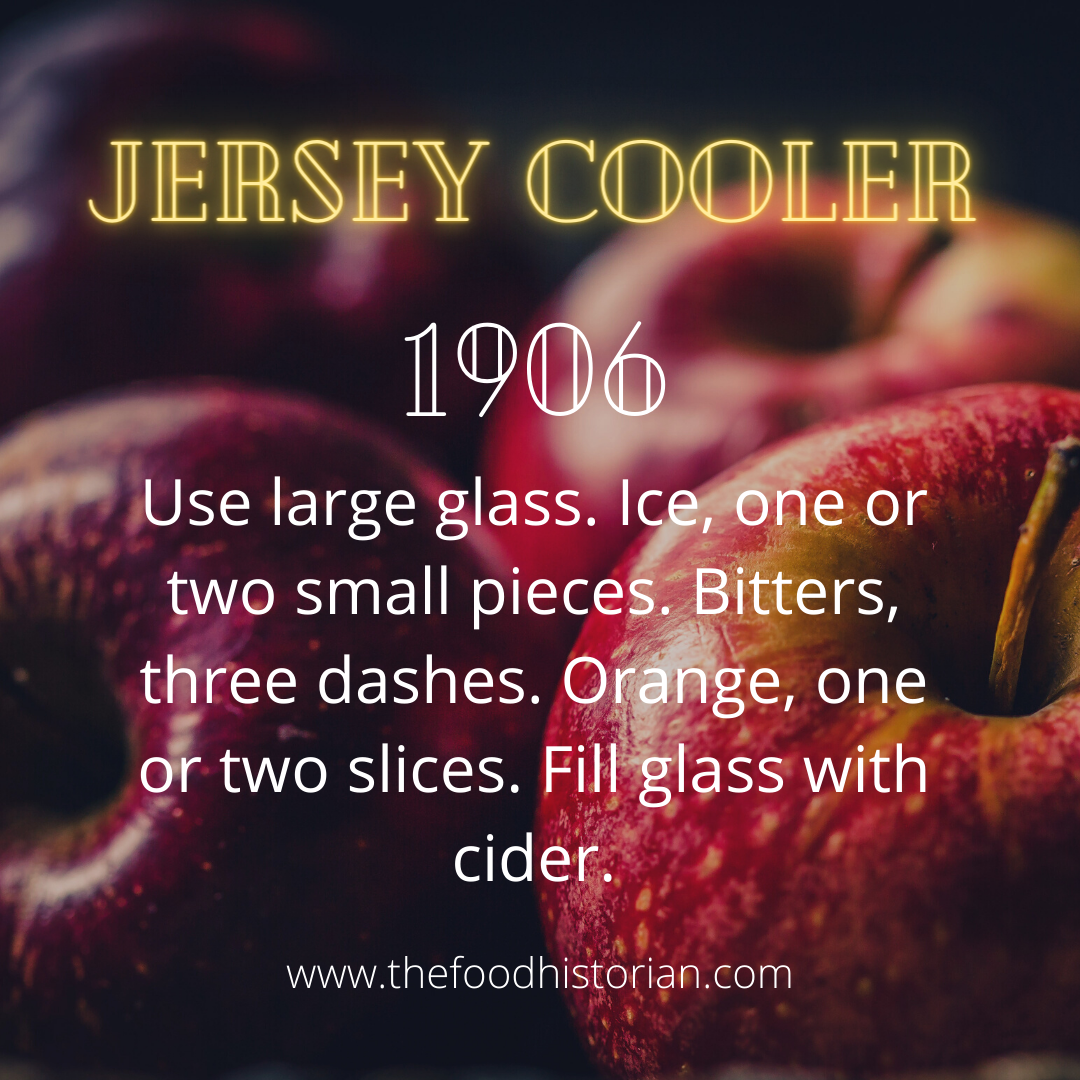
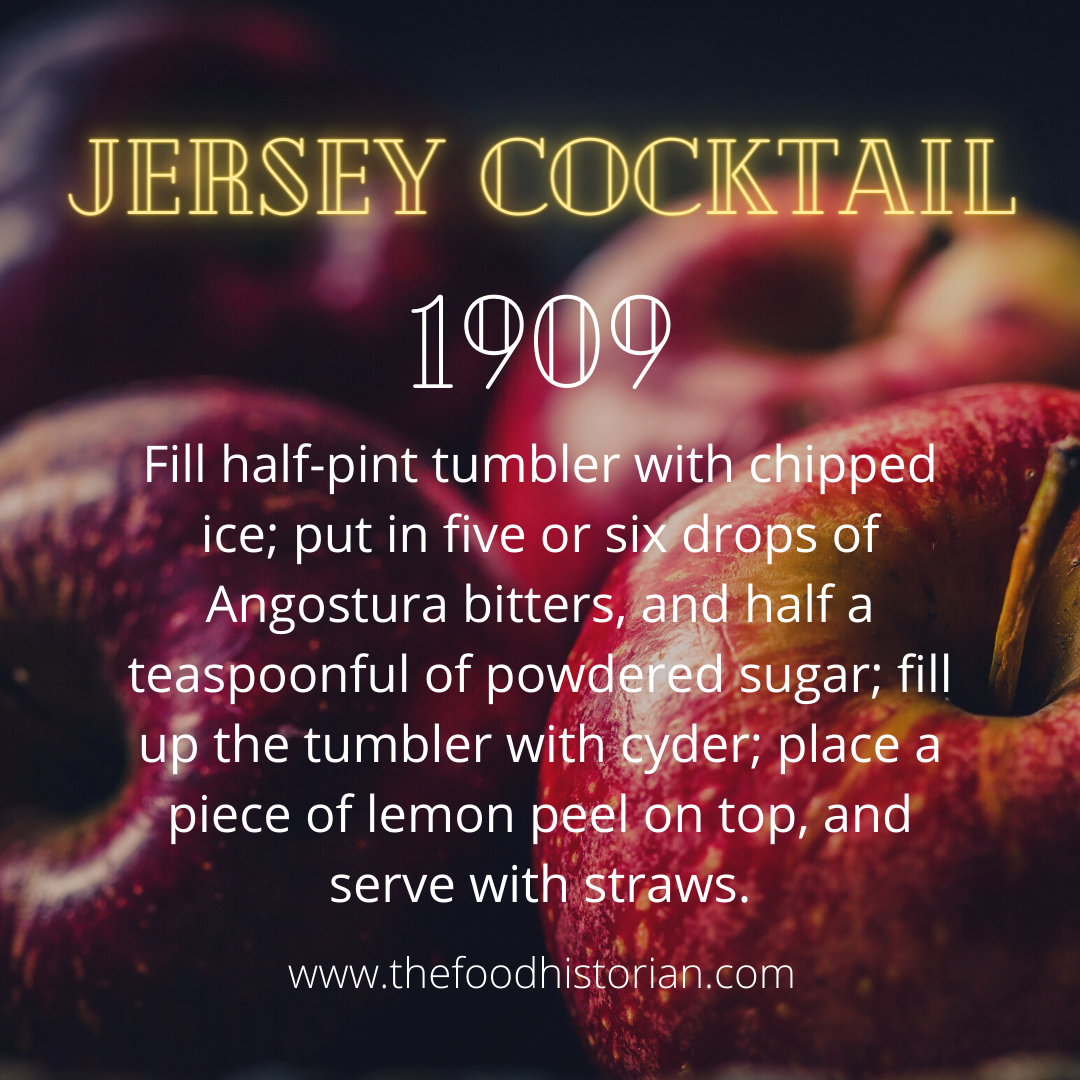


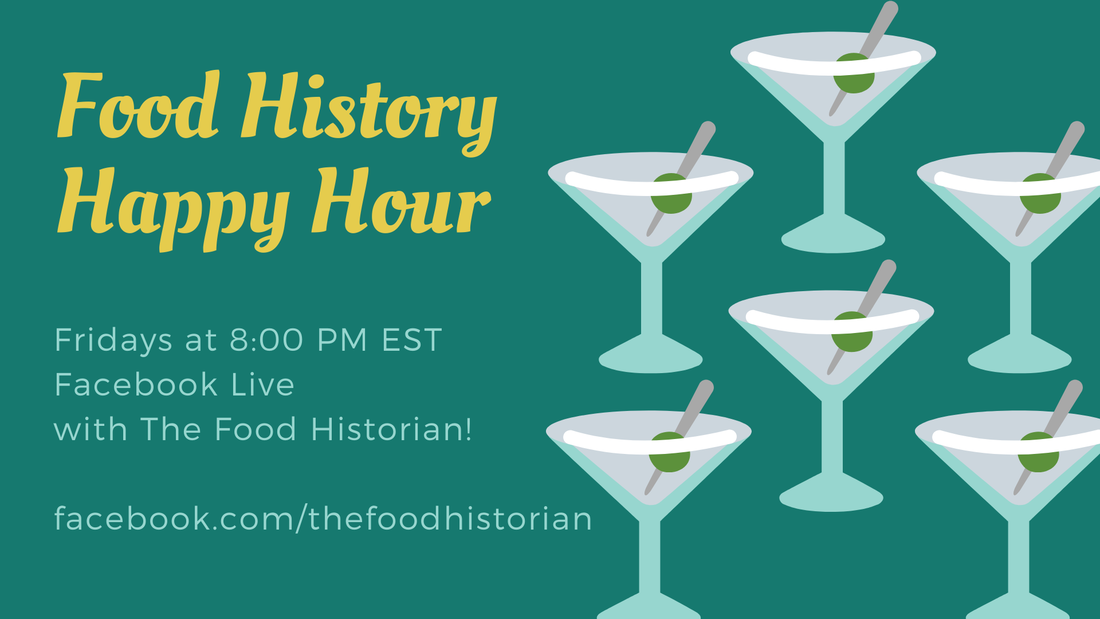
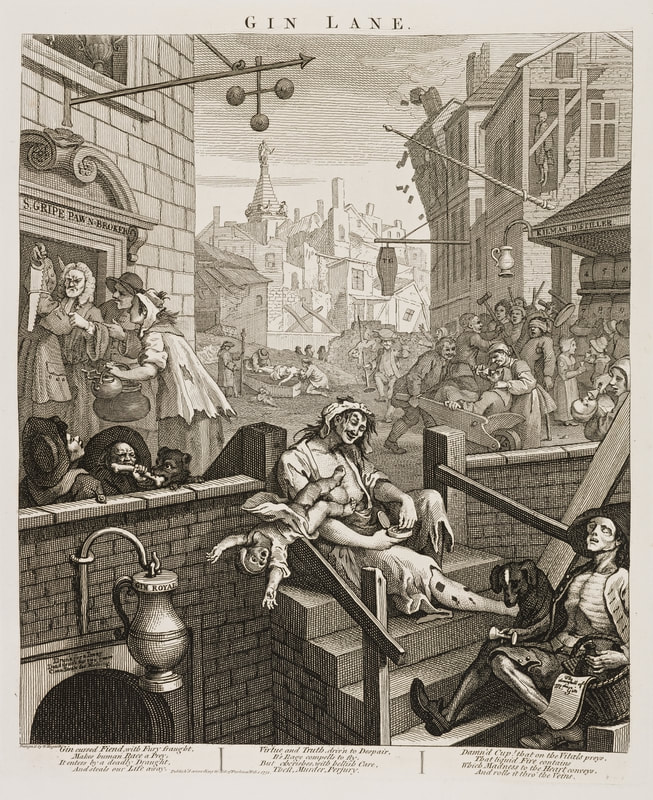



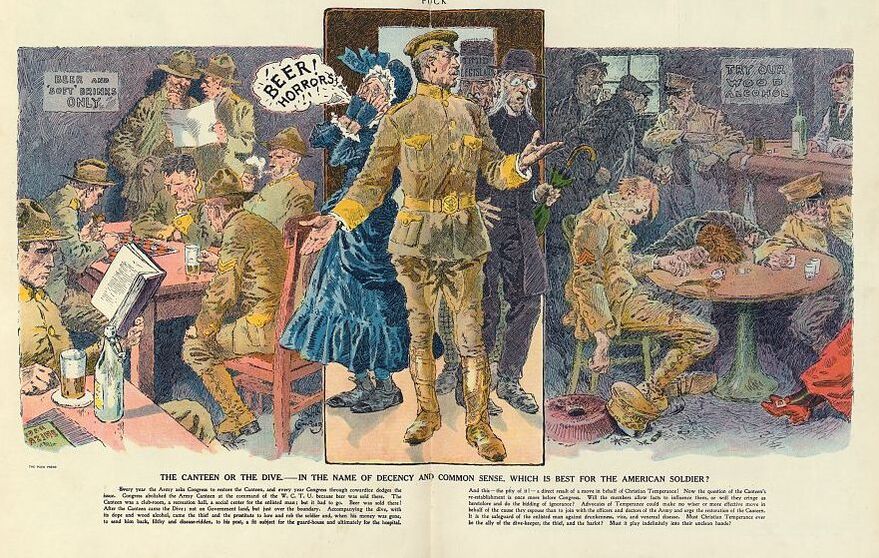
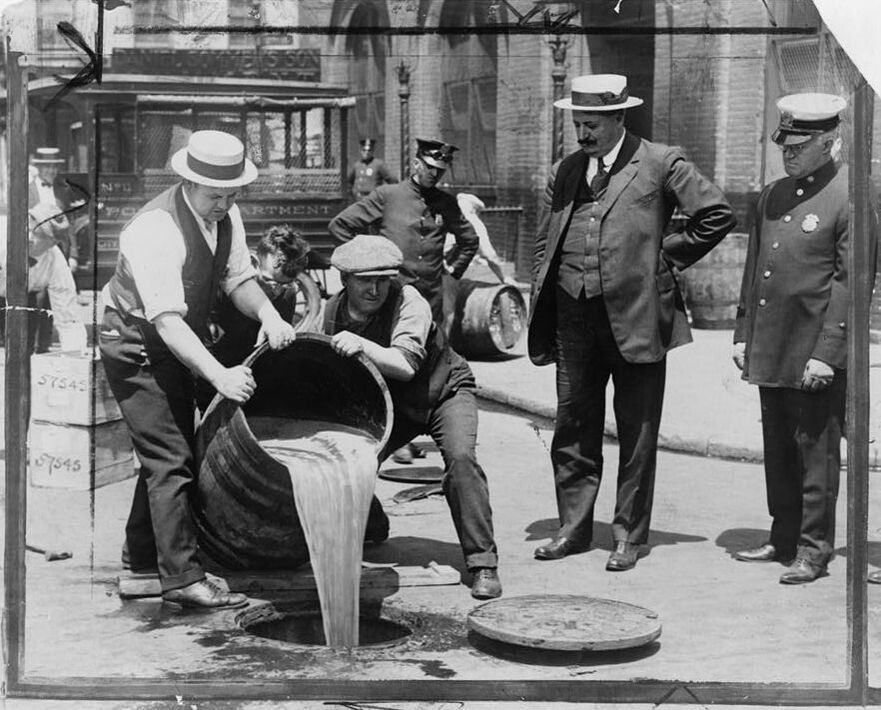
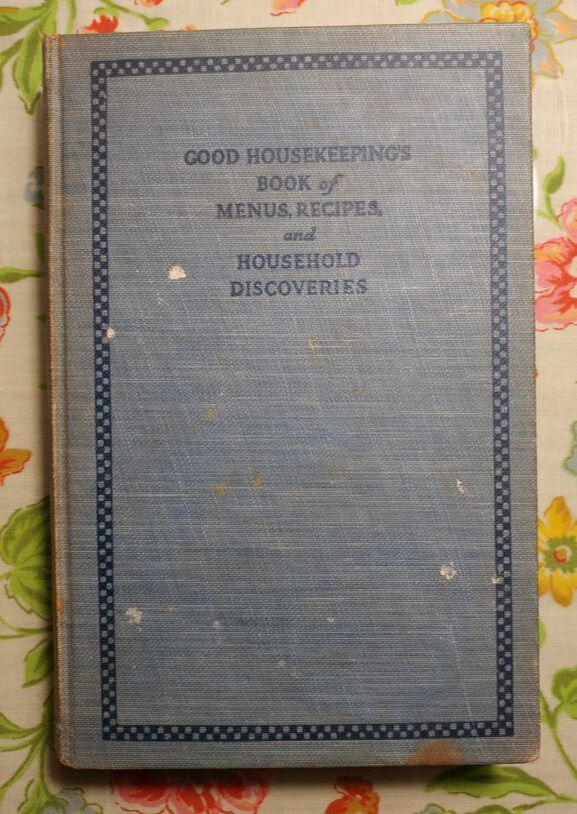
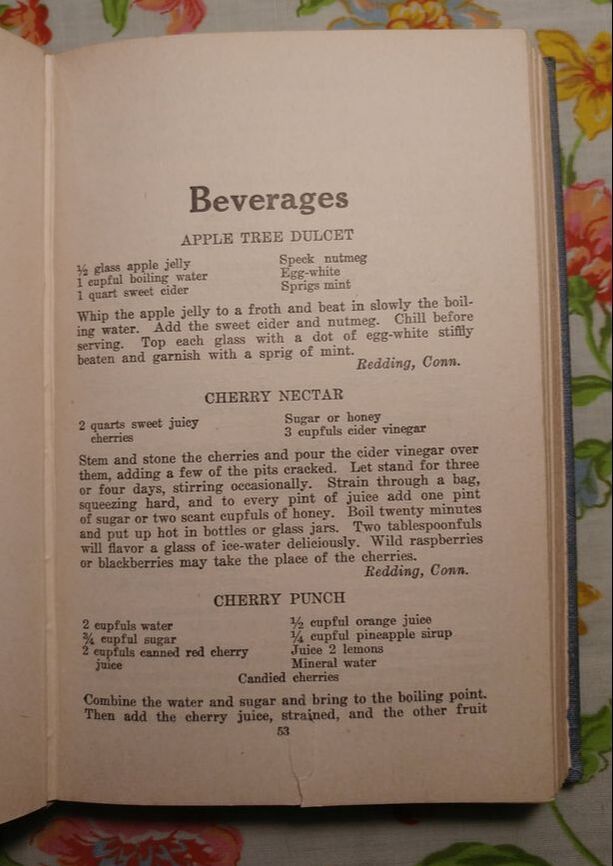
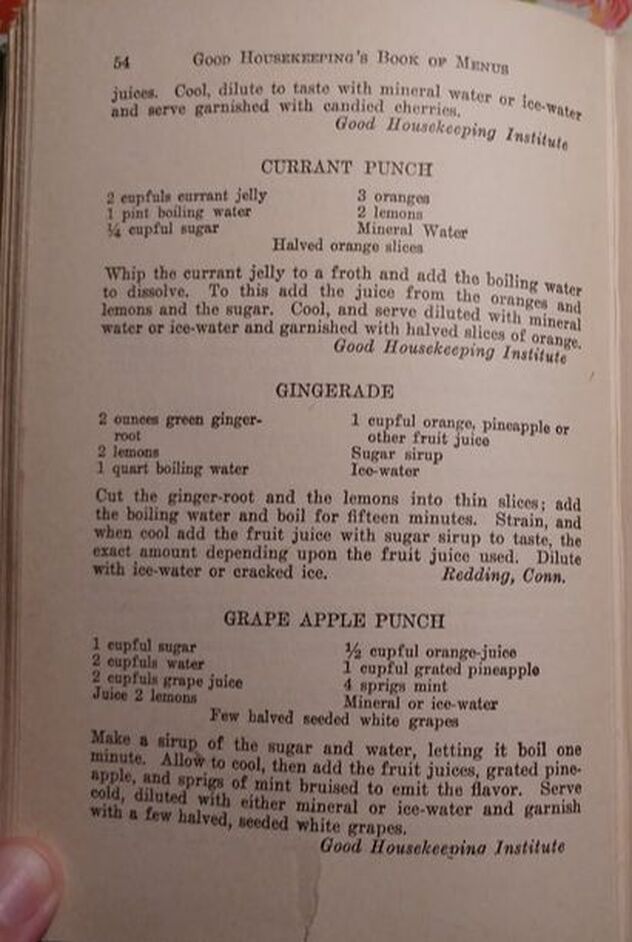
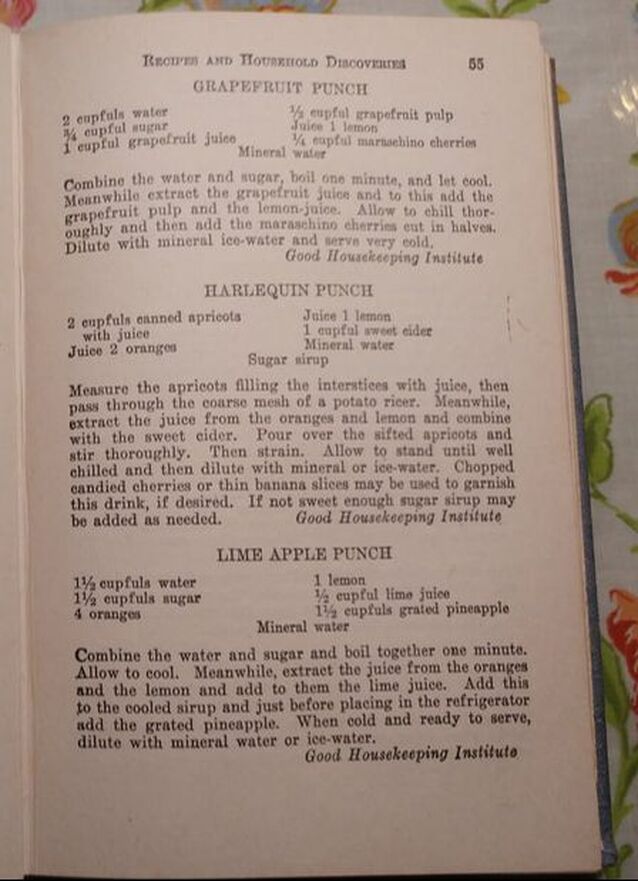
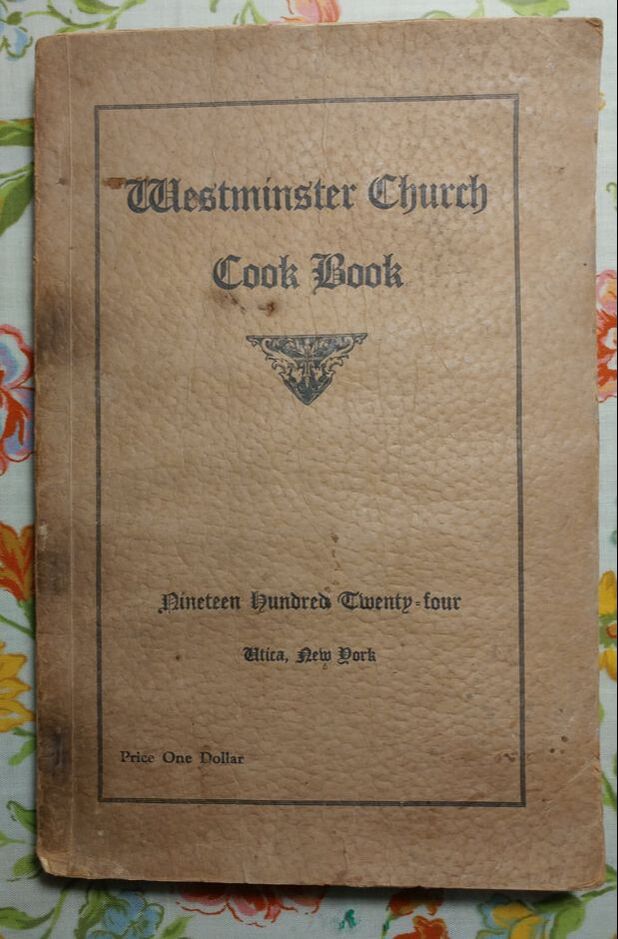


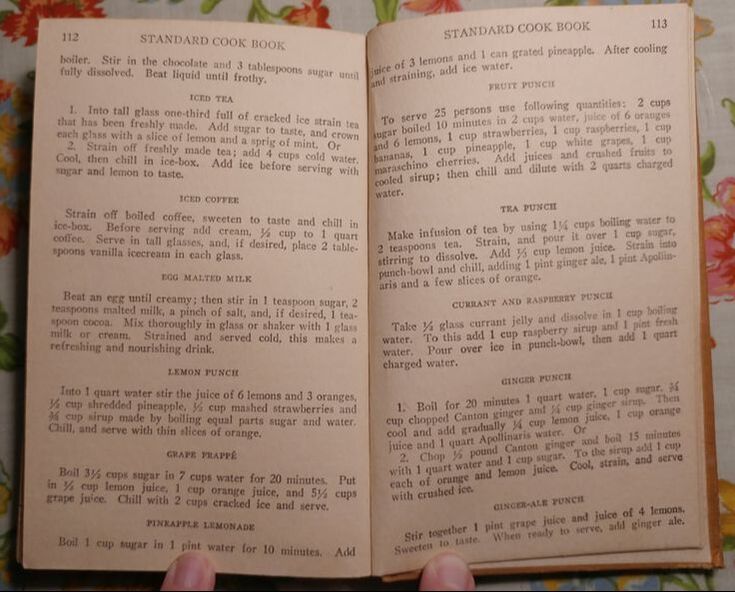
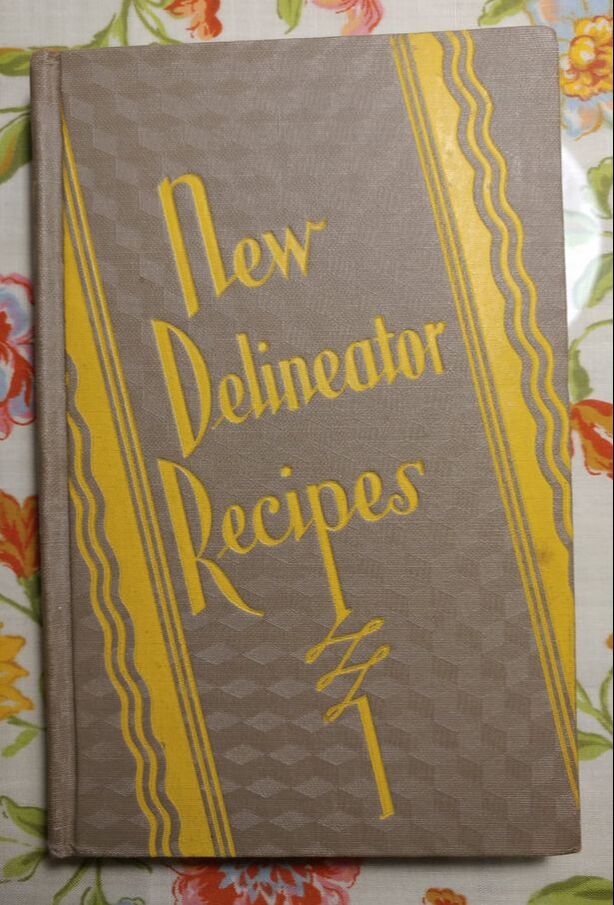
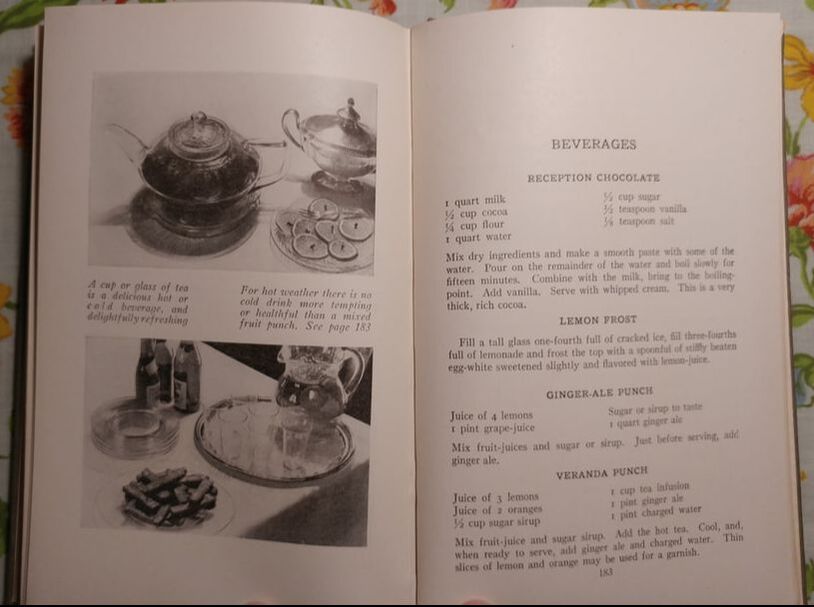


 RSS Feed
RSS Feed